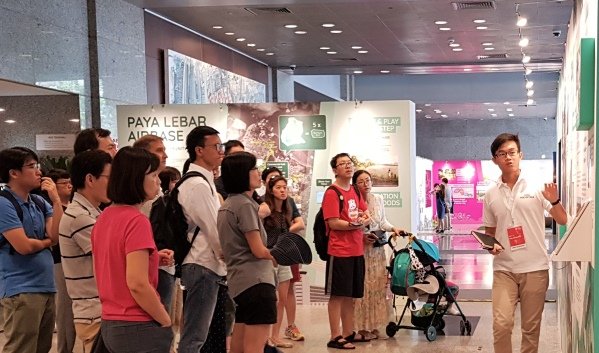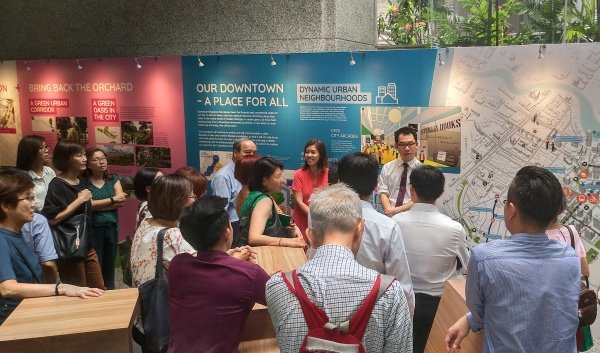We are in an era of global uncertainty. Our way of life is evolving rapidly and significantly impacted by unprecedented disruptions, from the COVID-19 pandemic and the climate crisis, to digital revolution and demographic shifts. How can we emerge stronger from these disruptions and safeguard our cities and planet for future generations?
Adapted from Cities Adapting to a Disrupted World webinar presented by the World Cities Summit.
Planning for Optionality
To better prepare ourselves for the challenges and opportunities in this increasingly complex world, reviewing and adapting our long-term planning approach is critical. This is why URA’s latest cycle of the Long-Term Plan Review in 2021 emphasises planning for optionality and resilience for future Singapore.
Optionality allows us to examine possible futures that could arise in a systematic manner. This enables the development of land use plans and strategies that can respond not just to shifting trends but also to future uncertainties. A key part of this approach is to identify signposts that can be tagged, identified, and monitored over time, which will alert planners when there is a need to re-evaluate existing strategies and assess our next steps. This grants us the advantages of agility and flexibility to respond to changing needs as well as to recognise and seize nascent opportunities.


Engaging various community stakeholders at the Draft Master Plan 2019 exhibition
While we monitor such signposts, keeping sight of the larger vision based on a future that society wants to see is equally important. As aspirations, lifestyles and business needs continue to change, we stay in step by gathering views from the people as we develop our plans. This includes engaging with various communities, stakeholders, industry professionals, and experts to obtain feedback as well as to co-develop ideas from the collective wisdom of our people while strengthening social resilience in our cities.
Adapting to the way people Live, Work and Play
Efficient cities are often associated with higher productivity, more innovation, better access to services and shorter commutes. As the world continues to battle the pandemic, we wonder what the new definition of a city we want to live, work, and play in might be.
In the past year, we have seen new innovations and accelerated digital adoption with more working remotely and organising get-togethers virtually. There has also been significant uptake in the usage of contactless e-commerce and e-services. These patterns underline the importance of digital transformation and innovation in overcoming disruptions and will likely continue to be the case in the future. Therefore, we should explore ways to capitalise on this accelerated trend towards a more digitally connected world.
We will also need to think about how we can continue to harness the benefits of high-density cities, while ensuring a good quality living environment for its residents.
One way we have been addressing this in Singapore is by adopting a polycentric strategy. For instance, our economic gateways and job nodes are spread throughout the island for better distribution of jobs as well as to keep residents closer to their families and homes.

Located in the northern part of Singapore, Woodlands Regional Centre is one of such gateways that brings more work, live, play, and learn options to the area.
Residential towns have been planned with shops and amenities easily accessible to residents, and this has proved particularly useful for many who are working from home during this period.
The pandemic has also highlighted the importance of designing for health and wellbeing – to encourage active living and to mitigate physical and mental health risks. We recognise this and are working towards increasing greenery provision and planning for more parks and open spaces. By 2030, we target for all homes in Singapore to be within 400 metres of a park or park connector.
Harnessing Digitalisation
With all the potential disruptions, evolving needs and increasing land constraints, planning in today’s dynamic operating environment requires a full understanding of the city as an ecosystem.
We can leverage digitalisation to consolidate up-to-date or even real-time information, improve our understanding of the different needs of people, better coordinate infrastructure planning and development, and develop models to enable testing of scenarios for greater resilience.
For example, we can quickly identify areas that are more accessible via public transport, evaluate how accessible jobs and different amenities such as parks, retail and schools are from a particular residential area, and perform wind flow modelling and shade analyses to ensure that our towns are designed to maximise natural ventilation for better air quality, and shade and lighting for thermal comfort and safer places.
Importance of continuing to plan long term
In Singapore, we must continue to take a long-term approach in urban planning, to balance considerations ranging from economic, social, and environmental standpoints. This involves developing broad strategies and identifying land for various needs for the long-term, which then translates into planning for the necessary infrastructure and resources to support these plans.

The rooftop at the Keppel Marina East Desalination doubles up as a recreational space for people to take a walk or unwind with great views of the city skyline.
By doing so, we can ensure that both current and future needs of the people are met, while optimising our limited land and sea space, as well as creating a sustainable and high-quality living environment.
Source: https://www.ura.gov.sg/Corporate/Resources/Ideas-and-Trends/Adapting-to-a-Disrupted-World



